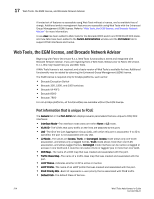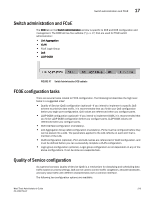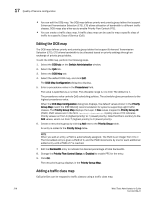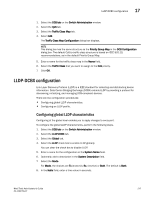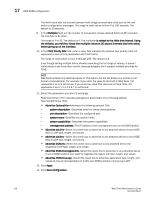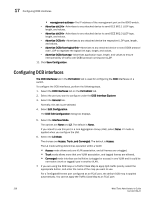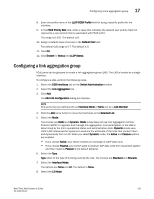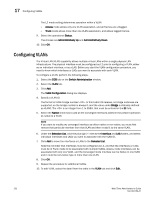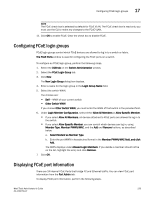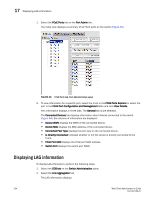Dell PowerConnect Brocade M6505 Brocade 7.1.0 Web Tools Administrator's Guide - Page 247
Adding an LLDP profile, Type/Length/Value TLV.
 |
View all Dell PowerConnect Brocade M6505 manuals
Add to My Manuals
Save this manual to your list of manuals |
Page 247 highlights
LLDP-DCBX configuration 17 Adding an LLDP profile The LLDP profile determines LLDP settings per port. To add an LLDP profile, perform the following steps. 1. Select the DCB tab on the Switch Administration window. 2. Select the LLDP-DCBX tab. 3. Select the LLDP Profile tab. 4. Click Add. The LLDP Configuration dialog box displays. 5. Enter a name for the configuration in the Name field. 6. Optionally, add a description in the Description field. 7. Select the Mode. For Mode, the choices are Tx (transmit), Rx, (receive) or Both. The default is Both. 8. In the Hello field, enter a time value in seconds. The Hello value sets the interval between hello bridge protocol data units sent by the root switch configuration messages. The range is 4 to 180 seconds. The default is the global configuration range. 9. In the Multiplier field, set the number of consecutive misses allowed before LLDP considers the interface to be down. The range is 2 to 10. The default is the global configuration range. The multiplier is related to the Hello time interval. Using the defaults, you wait four times (the multiplier value) at 30 second intervals (the hello value) before giving up on the interface. 10. Select the parameters you want to exchange. Note that the term TLV indicates packaging of parameters into a Brocade-specific Type/Length/Value (TLV). - Advertise Optional-tlv-Advertises the following optional TLVs: • system-description-Describes switch or blade characteristics. • port-description-Describes the configured port. • system-name-Specifies the system name. • system capabilities-Describes the system capabilities. Web Tools Administrator's Guide 219 53-1002756-01



